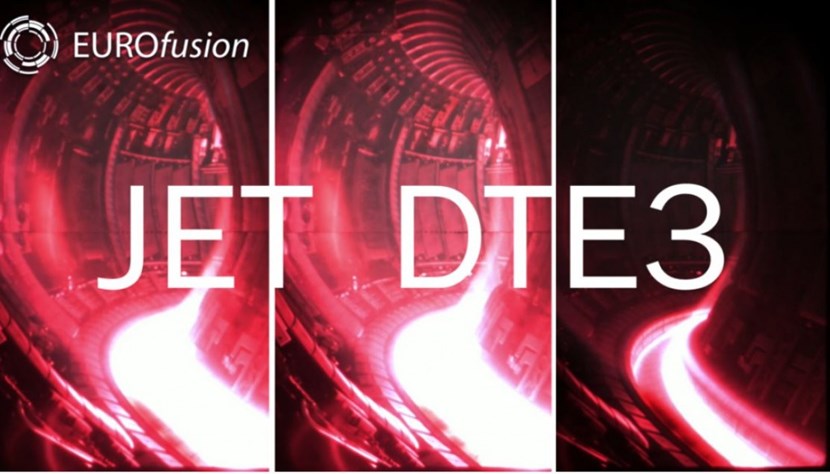ITER NEWSLINE
-
Fusion world
JET completes a storied 40-year run
Fusion world | JET completes a storied 40-year run
In its final deuterium-tritium experimental campaign, Europe's JET tokamak device demonstrated plasma scenarios that are expected on ITER and future fusion power plants, offering critical insights into key aspects such as heat exhaust, managing fuel retention, and the effect of fusion neutrons on cooling systems and electronics.

Screenshots from a 'Neon-Seed Integrated ITER Baseline Plasma Scenarios in D-T' pulse video recorded during the EUROfusion DTE3 campaign at JET, showcasing pivotal experiments at the forefront of fusion research. Image composed by Karl Tischler, EPFL, courtesy of EUROfusion, based on screenshots from a video courtesy of the UK Atomic Energy Authority.
The experimental campaign at JET was conducted by over 300 scientists participating in EUROfusion from across Europe together with engineering and scientific technical staff at the United Kingdom Atomic Energy Authority. JET is the only existing facility of its kind that can already operate with the high-performance deuterium-tritium fuel mix that will be used in future fusion power plants. While most fusion experiments use fuels like hydrogen or deuterium alone, testing with deuterium-tritium mix brings scientists and engineers as close as possible to the conditions of a real fusion power plant.
In late 2021, the team at JET introduced the high-performance deuterium/tritium fuel mix for only the second time in the device's history. This DTE2 campaign resulted in fusion energy record output of 59 megajoules during a five-second pulse in December 2021. Other highlights of the campaign were: the first direct observation of the fusion fuel keeping itself hot through alpha heating, confirmation of predictions for heat transport inside the plasma, successful tests of tritium recovery, and the demonstration of heating and control techniques relevant to future fusion reactors*.
The JET team has now completed its third and final campaign, DTE3. In a press release published last week, the team reports that it was able to replicate the high-fusion-energy experiments from DTE2, highlighting the reliability and maturity of JET's operational methodologies that are essential also for ITER's success. The campaign also tested optimized scenarios and novel operational strategies, enhancing scientists' understanding of deuterium-tritium plasmas; tested heat exhaust solutions, and focused on the effect of 14.1 MeV fusion neutrons on cooling systems and and electronics (the latter in collaboration with CERN). (See a detailed list of DTE3 achievements here.)
JET commenced operation in 1983 as a joint European project, undergoing several enhancements to improve its performance over the years. In 1991, JET became the world's first reactor to operate using a 50—50 mix of tritium and deuterium. The facility set numerous fusion records including a record Q-plasma (the ratio of the fusion power produced to the external power put in to heat the plasma) of 0.64 in 1997 and a fusion energy record output of 59 megajoules in a five-second pulse in December 2021. Built by Europe and used collaboratively by European researchers over its lifetime, JET became UKAEA property in October 2021, celebrated its 40th anniversary in June this year, and will cease operations at the end of 2023.
*See a full report of DTE2 results in this special issue of Nuclear Fusion.
return to the latest published articles


